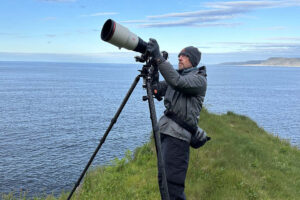 I was out walking in my neighborhood yesterday, craning my neck, scanning the sky to locate the resident eagle that was punctuating the quiet winter day with screams: screams of delight at the high, bright clouds after rain? Or the uptick of humans swarming at the domed capitol building? Or at the arrow-swift flight of pigeons that got away? I never did see the eagle, although some high-flying gulls fooled my eye a few times. But I did return my gaze, entranced, to those clouds.
I was out walking in my neighborhood yesterday, craning my neck, scanning the sky to locate the resident eagle that was punctuating the quiet winter day with screams: screams of delight at the high, bright clouds after rain? Or the uptick of humans swarming at the domed capitol building? Or at the arrow-swift flight of pigeons that got away? I never did see the eagle, although some high-flying gulls fooled my eye a few times. But I did return my gaze, entranced, to those clouds.
They animated the sky, tracing the wind, catching the sunlight, streaking the blue with their grays and whites. They moved and changed and massed and trailed off into wisps. If I could mistake a gull’s wings for an eagle, how would I ever name the clouds? Many-syllabic Latin words floated as freely in my mind as their namesakes sported in the sky, but I had to let any identification hopes slip away on the breeze. Despite having just turned the last page on Maria Ruth’s engrossing study, A Sideways Look at Clouds, like Joni Mitchell, “I really don’t know clouds at all.”
But now, significantly, I know what I don’t know. And I possess a template of how I might go about filling in some of the yawning gaps in my understanding of how the world works. As ephemeral as clouds appear to be, they are physical bodies responding to the physics and chemistry and geography of life on Earth, its grit and salt and general mayhem. With tenacity that pushes mere idle curiosity to the mat, Ruth pulls clouds in close and asks more questions than you ever contemplated, probing their mysteries and then digging deeper to question even the questions. Her subject matter may be slippery and, if you tried to clutch them with your hands, even ghostlike, but her voracious questing brings clouds into focus as constructs we can grasp, analyze and name.
This is a serious science-rich study, yet accessible to general readers. Ruth achieves this open-door by forthrightly declaring herself a complete novice in the field and then tugging her readers with her as she plunges in to learn all there is to know about clouds. She finds the experts who can decode the fleeting ups and downs of the molecules that form clouds, of the forces of heat and cold, evaporation, condensation, wind, solar energy and the out-breathing of life forms. It’s all in there: number-crunching, definitions, discovery and more questions. Sometimes difficult, but never dry or dull, it’s worth it to tag along. Ruth also makes this study as refreshing as a summer bike ride and as tingling as her attempt to swim in clouds on a foggy day. She brings the clouds right to us. We really begin to see them.
How is cloud watching like bird watching? They are akin. They draw us outside; they tilt our eyes upward. They fill us with wonder, delight, and questions. They have names that help us remember their attributes and life stories. They rarely stay still for long and teach us to seize the moment and appreciate our luck. They are there, existing for their own sakes but enriching our lives immeasurably. And mercifully, there are field guides to both! In an earlier book, Ruth made the secretive Marbled Murrelet visible even if we never see one; she does the same for clouds. They may fill our skies every day in billowing piles, hazy streaks or rain-leaking solid gray, but now she uncovers their secrets and teaches us to look—and see—them with new eyes. And sometimes eagles, or gulls, sail out of them to surprise us. (by Anne Kilgannon)







